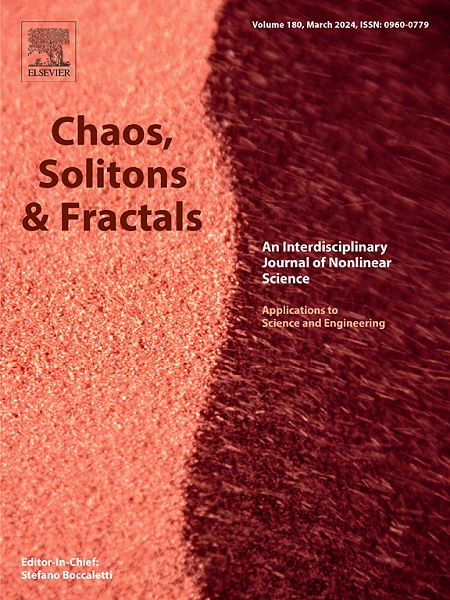基于非均质格子模型的自动驾驶与人为驾驶环境下能见度随通量变化的影响研究
IF 5.3
1区 数学
Q1 MATHEMATICS, INTERDISCIPLINARY APPLICATIONS
引用次数: 0
摘要
本文提出了一种新的网格流体动力学模型,该模型将自动驾驶汽车和人类驾驶汽车混合环境中的通量差与能见度效应相结合。流量差项反映了自动驾驶汽车和hv之间的车辆流量差异,也是反映驾驶员感知降低对人类驾驶车辆影响的能见度因子。该模型主要旨在捕捉两种车辆类型及其相互作用的独特特征,重点关注有限的能见度和车辆组之间的变化通量如何影响交通稳定性和拥堵动态。通过数值模拟对模型的性能进行了评价,突出了这些因素对交通流稳定性、相变和拥堵形成的影响。通过谱熵分析,通过仿真从更深层的角度探讨流量差、能见度、HV-AV穿透效应和记忆信息对混合交通动态的影响。结果表明,通量差和能见度的影响显著提高了交通稳定性,特别是在恶劣能见度条件下。与自动驾驶汽车相比,HVs车辆的能见度和反应时间参数的增强可能会使车内互动复杂化,可能导致反应延迟和对干扰的易感性增加。这项工作提供了对混合车辆环境的作用的见解,并为优化未来智能交通系统中的交通流提供了潜在的策略。本文章由计算机程序翻译,如有差异,请以英文原文为准。
Exploring visibility effects with flux variations under autonomous and human-driven vehicles environment in heterogeneous lattice model
This paper presents a novel lattice hydrodynamic model that integrates the flux difference with the visibility effect in a mixed environment of autonomous vehicles (AVs) and human-driven vehicles (HVs). The flux difference term accounts for disparities in vehicle flow between AVs and HVs, as well as a visibility factor to reflect the influence of reduced driver perception on human-driven vehicles. Mainly, the model is designed to capture the unique characteristics of both vehicle types and their interactions, focusing on how limited visibility and varying flux between vehicle groups impact traffic stability and congestion dynamics. Numerical simulation is conducted to evaluate the model’s performance, highlighting the effects of these factors on traffic flow stability, phase transitions and jam formation. We analyze spectral entropy to explore the impact of flux difference, visibility, HV-AV penetration effect and memory information on mixed traffic dynamics from a deeper perspective through simulation. The results indicate that the influence of flux difference and visibility significantly improves traffic stability, particularly under adverse visibility conditions. The enhanced visibility and reaction time parameters of HVs vehicles may complicate in-vehicle interactions as compared to AVs, potentially resulting in delayed responses and increased susceptibility to disturbances. This work provides insights into the role of mixed vehicle environments and offers potential strategies for optimizing traffic flow in future smart transportation systems.
求助全文
通过发布文献求助,成功后即可免费获取论文全文。
去求助
来源期刊

Chaos Solitons & Fractals
物理-数学跨学科应用
CiteScore
13.20
自引率
10.30%
发文量
1087
审稿时长
9 months
期刊介绍:
Chaos, Solitons & Fractals strives to establish itself as a premier journal in the interdisciplinary realm of Nonlinear Science, Non-equilibrium, and Complex Phenomena. It welcomes submissions covering a broad spectrum of topics within this field, including dynamics, non-equilibrium processes in physics, chemistry, and geophysics, complex matter and networks, mathematical models, computational biology, applications to quantum and mesoscopic phenomena, fluctuations and random processes, self-organization, and social phenomena.
 求助内容:
求助内容: 应助结果提醒方式:
应助结果提醒方式:


